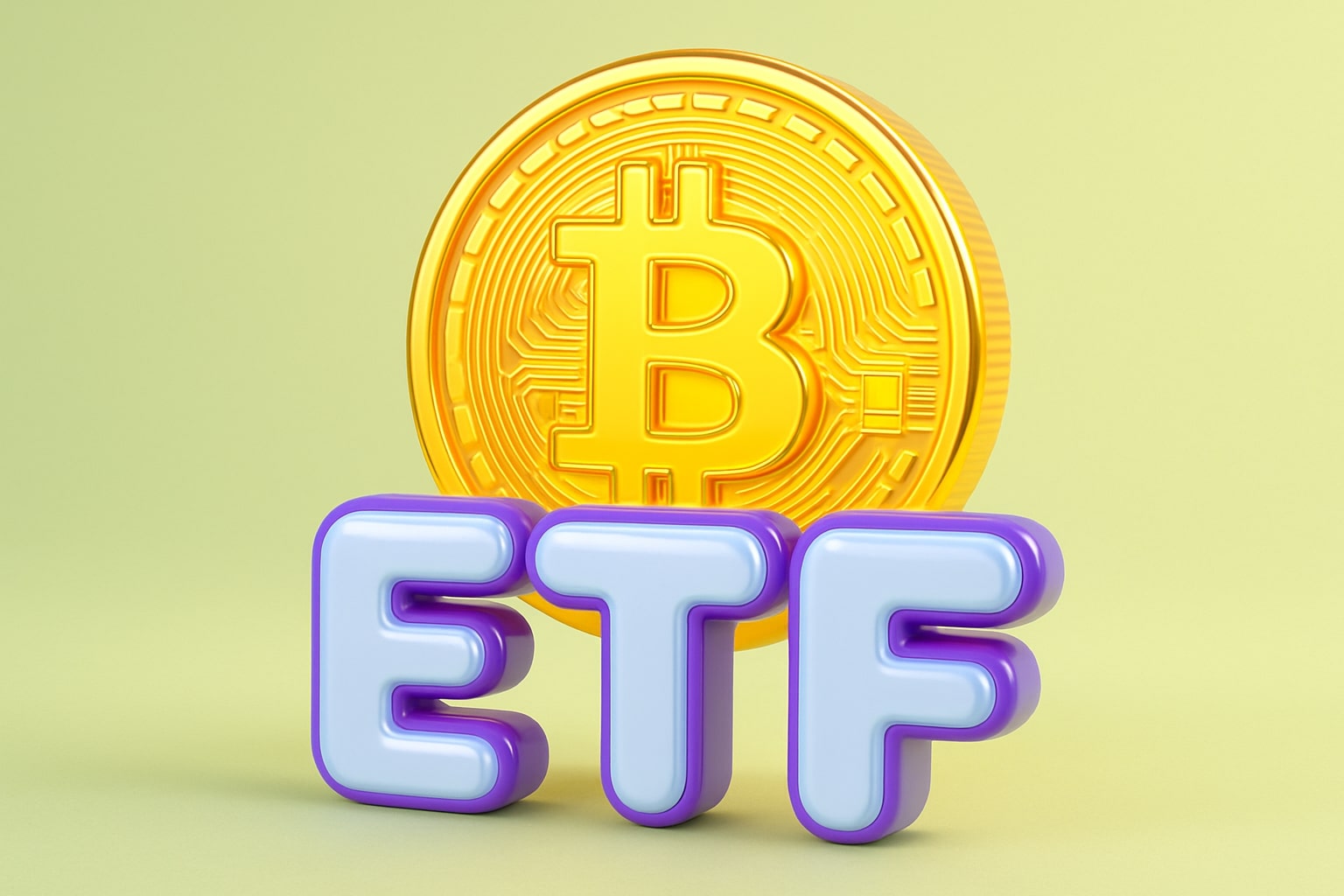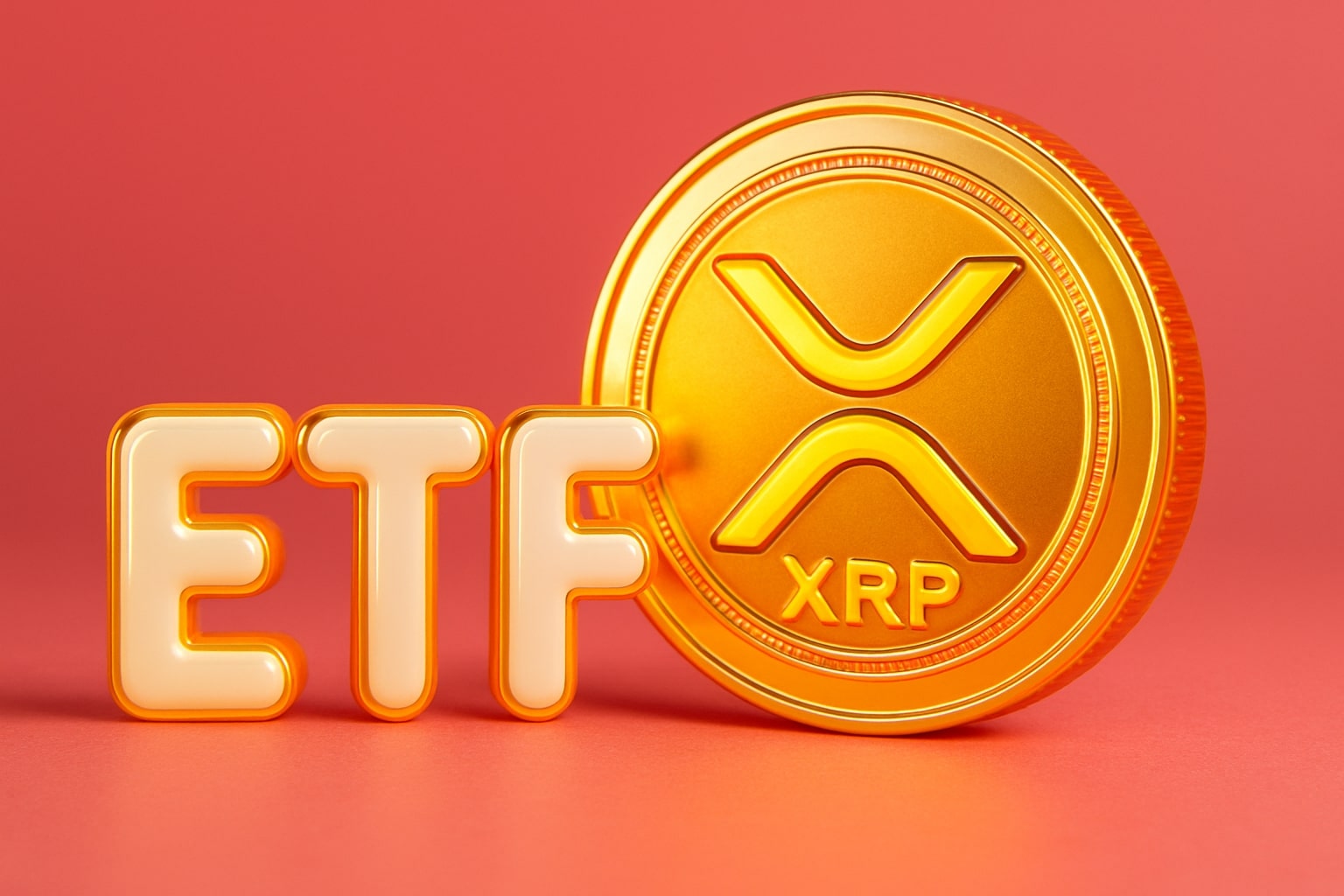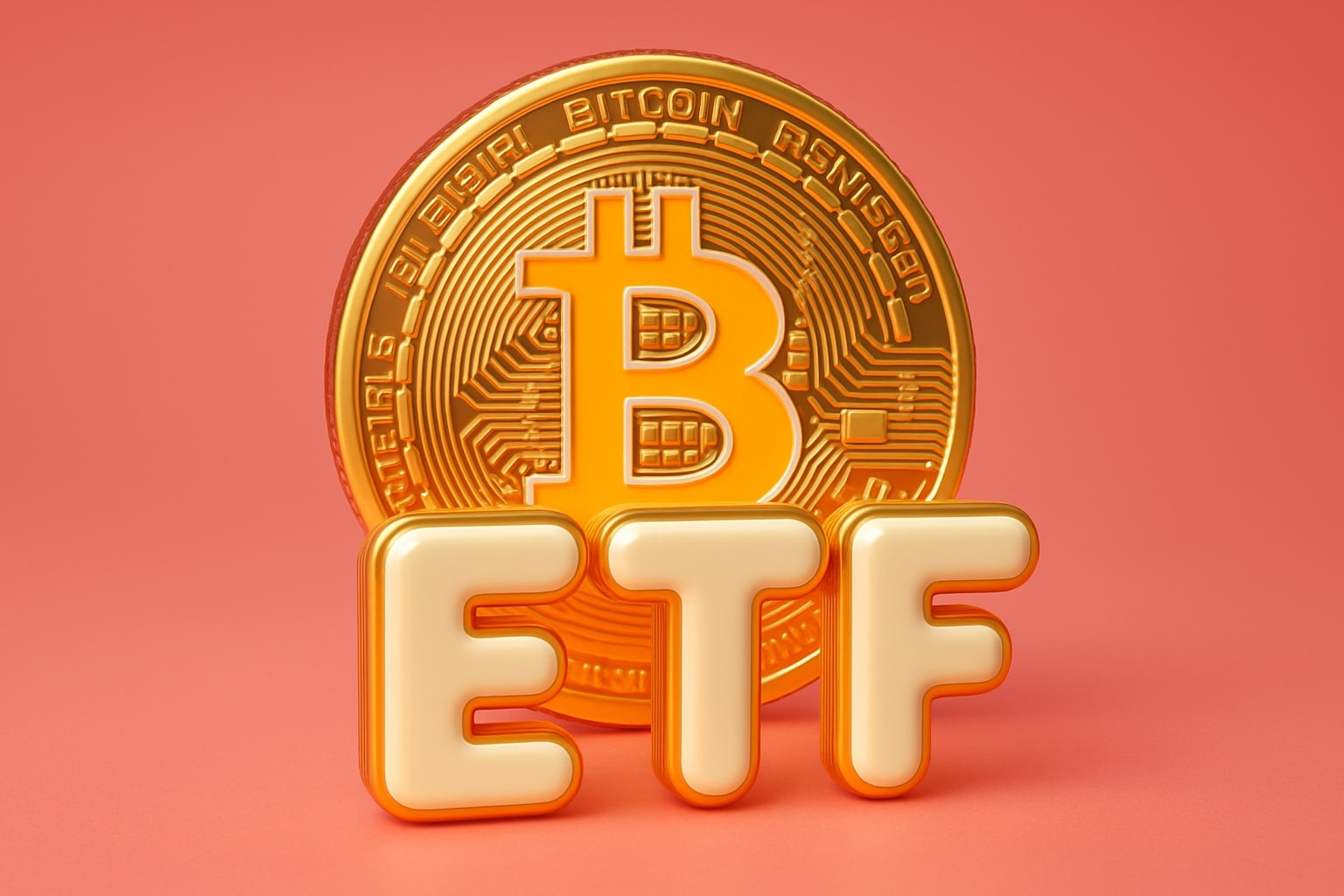
Bitcoin ETF Inflows Top $4.21B as BlackRock’s $210.9M Surge and Fed Easing Bets Drive BTC Above $111K
October marked a powerful turnaround for Bitcoin ETFs, with $4.21B in inflows led by BlackRock, Fidelity, and ARK | That's TradingNEWS
Bitcoin (BTC-USD): Institutional Wave Reignites as ETF Inflows Surpass $4.21B — BlackRock and Fidelity Lead Capital Rotation Amid Fed Cuts and Global Repricing
Massive ETF Inflows Mark Institutional Resurgence
Institutional engagement in Bitcoin (BTC-USD) has surged back to peak 2021 levels, driven by the accelerating expansion of spot ETFs and deepening corporate custody structures. October alone recorded $4.21 billion in net ETF inflows, reversing last month’s $1.23 billion in redemptions. This swing underscores renewed conviction among large-scale investors repositioning portfolios as rate cuts approach and the digital asset class cements itself inside traditional finance.
Leading the charge, BlackRock’s iShares Bitcoin Trust (IBIT) absorbed $210.9 million in new capital this month, with ARK 21Shares Bitcoin ETF (ARKB) and Fidelity’s Wise Origin Bitcoin Fund (FBTC) bringing in $54 million and $52 million respectively. Combined, these three issuers now oversee more than $110 billion in Bitcoin-linked assets. Meanwhile, cumulative ETF flows across the sector have climbed to $61.98 billion, accounting for 6.78% of Bitcoin’s total market capitalization, a record institutional share.
ETF trading volumes mirror that growth, rising to $3.34 billion weekly, more than double Ethereum’s ETF volume at $1.41 billion. The dominance of Bitcoin over Ethereum in ETF flows reflects a pronounced sentiment pivot: investors now prefer Bitcoin’s perceived resilience and “digital gold” narrative over Ethereum’s yield-based complexity amid macroeconomic uncertainty.
Price Structure and Market Reaction
Bitcoin trades near $111,383, up +1.7% in the last 24 hours, having rebounded from its mid-October low of $103,587. Earlier in the month, the cryptocurrency briefly touched an all-time high of $125,761 before a rapid correction, triggered by liquidity rotations during the ongoing U.S. government shutdown. Despite volatility, BTC-USD has stabilized above $110,000, marking the strongest three-day streak in October and reversing a two-week losing cycle.
Technically, BTC sits below its 50-day EMA but remains firmly above its 200-day EMA, sustaining a bullish long-term structure despite short-term resistance. A breakout above $115,000 could reintroduce a rally toward $125,671, while a break below $103,500 would expose $100,000 as the next key support. The price reaction is tightly correlated with ETF inflows: every $500 million in new ETF capital has historically lifted Bitcoin by roughly 2.5–3.0%, suggesting that continued momentum could push prices toward the $120,000–$125,000 range before year-end.
BlackRock (NYSE:BLK) Anchors Market Liquidity and Crypto Access
Behind the institutional pivot sits BlackRock (NYSE:BLK), now commanding the largest ETF footprint in digital assets through its iShares Bitcoin Trust (IBIT). IBIT alone controls $89.17 billion in assets, nearly 60% of total Bitcoin ETF holdings. The fund’s scale and liquidity have made it the de facto gateway for institutions seeking exposure under regulated frameworks.
This leadership aligns with BlackRock’s broader digital strategy: expansion into stablecoin-linked money market funds and private-market digital infrastructure, now spanning acquisitions like HPS Investment Partners and GIP. These moves support the firm's $1 trillion+ cash management arm, making it a liquidity engine across both traditional and tokenized markets.
As of October 26, 2025, BlackRock’s stock trades at $1,136.63, up 11.7% year-to-date, with a total 19.1% annual return and a three-year total shareholder return of 84.5%. Market models project a fair value of $1,299.50, implying the shares remain 12.5% undervalued despite trading at 28.9x forward earnings, above the industry average of 26.6x. That premium, however, reflects dominance in both passive investing and digital asset conversion. The firm’s digital custody services—which handle ETF-linked BTC—are now absorbing billions in direct wallet inflows as institutional “whales” migrate coins from exchanges to ETF custodians.
Custody Flows and Market Structure Shifts
Blockchain data reveals a quiet but powerful shift in custody dynamics: large dormant wallets have resumed activity, transferring thousands of Bitcoin into ETF-aligned custodial structures. Analysts interpret this as early positioning for regulated collateralization, where ETFs will serve as the primary vehicle for Bitcoin-backed lending and derivatives.
JPMorgan has announced plans to enable crypto-backed loans by late 2025, accepting both Bitcoin and Ethereum as collateral and targeting up to $50 billion in new lending capacity within two years. This marks the first major U.S. bank to formally recognize crypto assets as balance-sheet collateral, further solidifying institutional legitimacy. According to Bloomberg Intelligence, this could inject up to $50 billion in secondary market liquidity, amplifying Bitcoin’s role in cross-market credit formation.
Read More
-
PPA ETF at $154: Can This Defense ETF Keep Beating ITA and SPY?
14.12.2025 · TradingNEWS ArchiveStocks
-
XRP ETFs XRPI and XRPR Pull In $975M While XRP-USD Fights To Hold $2
14.12.2025 · TradingNEWS ArchiveCrypto
-
Natural Gas Price Forecast: NG=F Hits $4.11 As Warm Winter Outlook Puts $3.913 Support At Risk
14.12.2025 · TradingNEWS ArchiveCommodities
-
USD/JPY Price Forecast - Dollar to Yen Can BoJ’s 0.75% Shock Break The 155–158 Range?
14.12.2025 · TradingNEWS ArchiveForex
Regulatory Clarity and ETF Pipeline
The U.S. SEC is reviewing an unprecedented 155 crypto-based exchange-traded product (ETP) filings, covering 35 digital assets, with decisions postponed until early 2026 due to the government shutdown. Among them, ProShares’ diversified CoinDesk 20 ETF, which tracks Bitcoin, Ethereum, XRP, and Solana, stands as a potential game-changer, offering the first multi-asset regulated crypto basket in the U.S.
If approved, the CoinDesk 20 ETF could redefine portfolio allocation norms, providing passive exposure across multiple tokens and reducing single-asset volatility. Institutional strategists expect this approval could boost Bitcoin’s ETF-linked AUM to 8–9% of circulating supply, a level historically associated with parabolic bull phases.
Ethereum Outflows Reinforce Bitcoin Dominance
While Bitcoin ETFs absorbed billions, Ethereum ETFs registered $243.9 million in net outflows during the same week, following $311 million in the previous period—totaling over $555 million in redemptions for October. Data from SoSoValue indicates BlackRock’s ETHA ETF led the withdrawals with $100.99 million, while Grayscale’s ETHE was the only notable inflow with $7.4 million.
This divergence between Bitcoin and Ethereum marks the second consecutive week of rotation, signaling that institutions are retreating from yield-centric exposure to embrace Bitcoin’s “store-of-value” proposition. Ethereum ETFs still maintain $26.39 billion in assets, representing 5.55% of ETH’s market cap, but that figure lags far behind Bitcoin’s $149.96 billion ETF footprint, which now accounts for 6.78% of its total supply.
Ethereum’s price slipped 0.89% to $3,832.38, extending its two-week decline, while Bitcoin rose to $111,600, up 4.5% from its October 11 low. Analysts from multiple desks, including Kronos Research, highlight that Ethereum’s subdued on-chain activity—particularly in DeFi and staking contracts—has weakened its near-term investment appeal.
Macro Catalysts: Fed Policy, Trade Talks, and Market Risk Appetite
Bitcoin’s latest rally coincides with easing U.S.–China trade tensions, which have reignited global risk appetite. The upcoming Fed meeting on October 29 carries high stakes: the CME FedWatch Tool shows 98.3% probability of a 25-basis-point cut in October and 91.1% for another in December. Such back-to-back cuts would likely lower U.S. real yields, historically a tailwind for non-yielding assets like Bitcoin.
Traders are also eyeing the Trump–Xi meeting at the APEC Summit on October 30 as a potential volatility catalyst. A breakthrough on tariff relief could boost capital flows into risk assets, including crypto, while failed negotiations could reverse ETF inflows and test Bitcoin’s $103,000 floor.
Comparative Metrics and Market Structure
Bitcoin’s ETF-linked assets now total $149.96 billion, nearly six times Ethereum’s $25.81 billion, underscoring Bitcoin’s consolidation as the institutional benchmark. The difference extends beyond capital: BTC ETF weekly trading volume reached $3.34 billion, more than double ETH’s $1.41 billion, proving sustained engagement from professional allocators.
BlackRock’s IBIT, Fidelity’s FBTC, and Bitwise’s BITB collectively added $75.33 million in inflows this month, maintaining the sector’s positive net trajectory despite temporary outflows elsewhere. Together, these funds control roughly 6.4% of total Bitcoin supply, effectively removing it from circulation and constraining liquidity—a dynamic that often precedes major price expansions.
Broader Industry Impact and Capital Reallocation
The reacceleration of ETF inflows into Bitcoin (BTC-USD) reflects a structural shift in market composition. Institutional investors are increasingly using ETFs and custody channels to consolidate exposure, transforming Bitcoin from a speculative instrument into a macro collateral asset within financial portfolios.
This rotation has real implications: ETF custody frameworks are reducing available float on exchanges, thereby compressing supply while broadening regulated access. At the same time, stablecoin issuers and yield funds—supported by BlackRock’s enhanced liquidity strategies—are anchoring price stability by holding short-term Bitcoin derivatives as collateral buffers.
Valuation, Sentiment, and Trading View
The current setup paints a clear institutional bias toward accumulation. With ETF-driven demand, limited exchange float, and dovish macro catalysts, Bitcoin’s market structure appears fundamentally supportive. BTC-USD above $110,000 signals a confirmed re-entry into an upward cycle. Should ETF inflows maintain their current pace of $400–$500 million weekly, the next major price targets stand at $120,000–$125,000, while a confirmed breakout over $125,761 would open the door to $135,000–$140,000.
Market sentiment has improved significantly—Fear & Greed Index readings are back above 70, indicating optimism yet far from euphoria. Open interest across futures markets has expanded in tandem with spot inflows, hitting $9.9 billion, suggesting leveraged positioning remains controlled rather than overheated.
Investment Outlook: Institutional Anchoring and Strategic Accumulation
With regulatory clarity advancing, monetary policy easing, and ETF infrastructure maturing, Bitcoin is entering a new institutional phase. The combination of BlackRock’s ETF dominance, JPMorgan’s collateralization program, and record $4.21 billion monthly inflows firmly reestablish Bitcoin as the core asset of the digital economy.
From a market positioning standpoint, the data skews bullish. The ETF-driven absorption of supply, steady macro tailwinds, and accelerating institutional integration all point toward a sustained uptrend. Given current valuations and liquidity trends, BTC-USD is a Buy, with near-term targets at $120,000–$125,000 and mid-cycle fair value near $140,000–$150,000 if ETF inflows persist through Q4 2025.

















